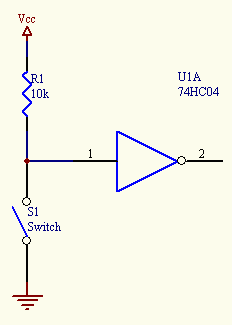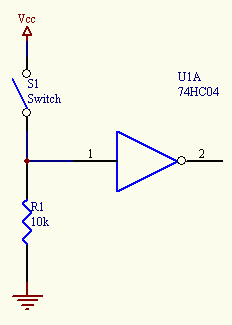So, if you're like me, and your formal (haha, high-school is formal) electronics education was nigh on two decades ago, but you want to play around with the exciting new developments in microcontrollers, you're going to need a bit of a refresher course.
One of the first things I ran into was this vaguely-remembered concept of a "pulldown" resistor and a "pullup" resistor. I looked and looked for a simple explanation, and I finally found one here:

The pull-up resistor keeps the input high while the switch is open. The value of the resistor is high, so it won't pass much current.

The pull-down resistor does the same thing, but to keep the input low. Again, use a high-value resistor to avoid "wasting" current.